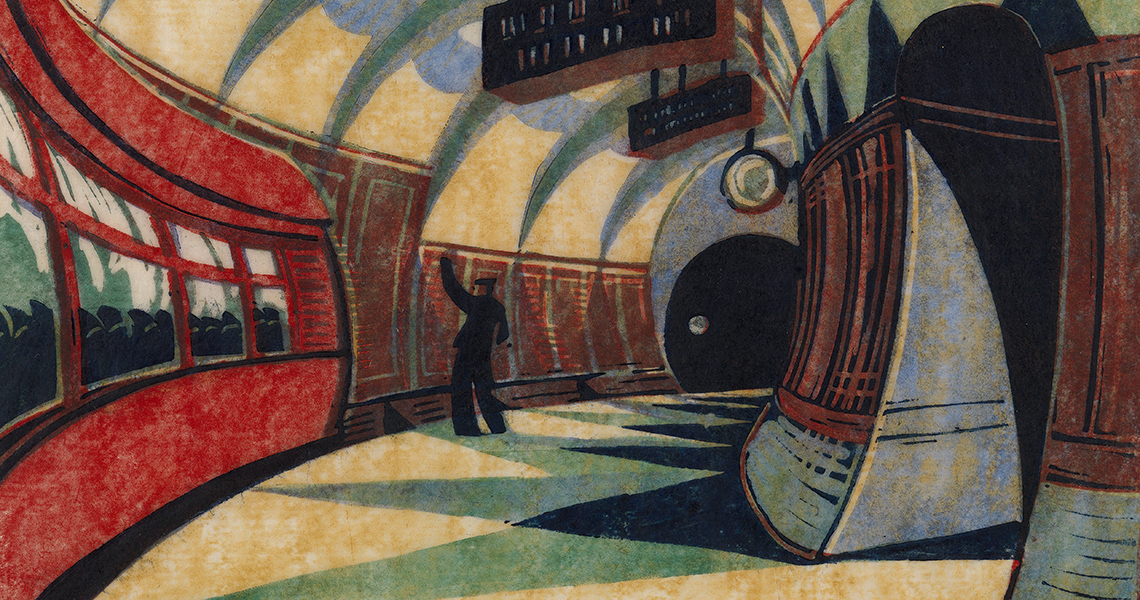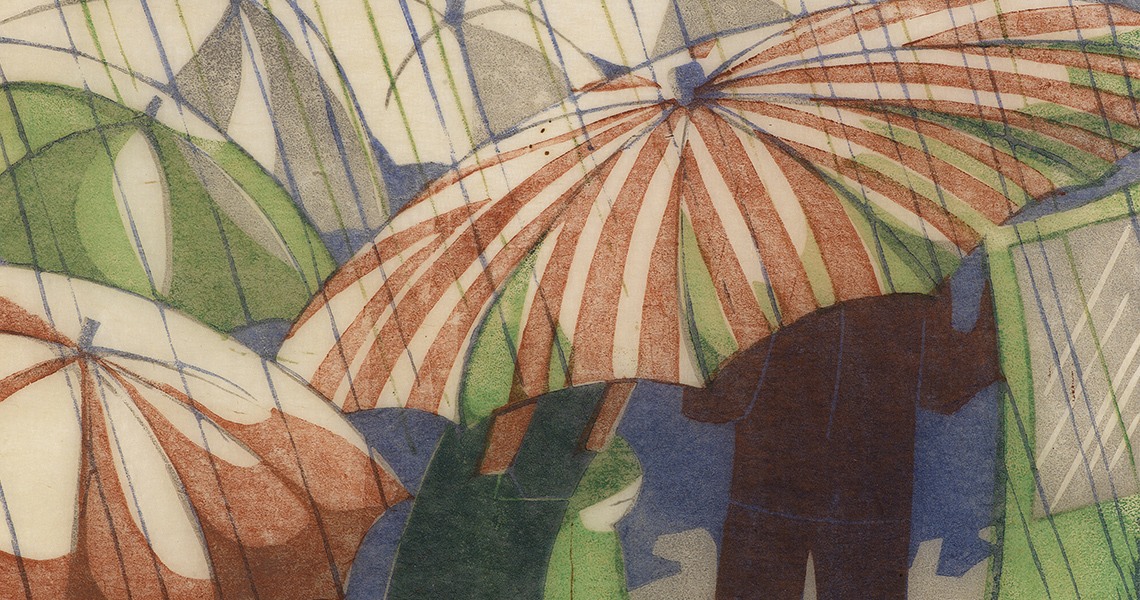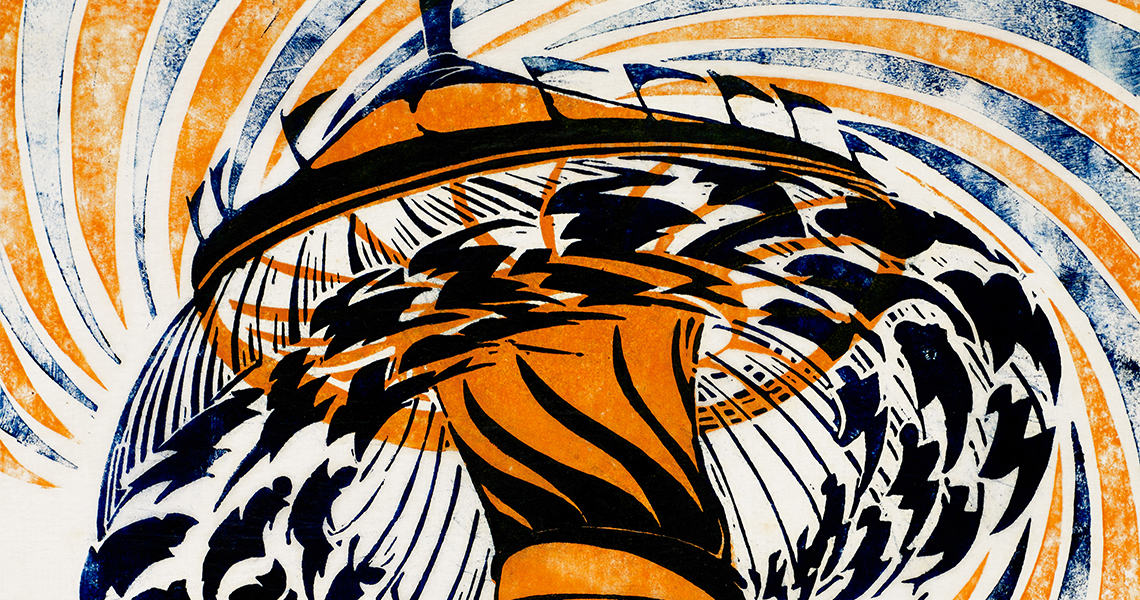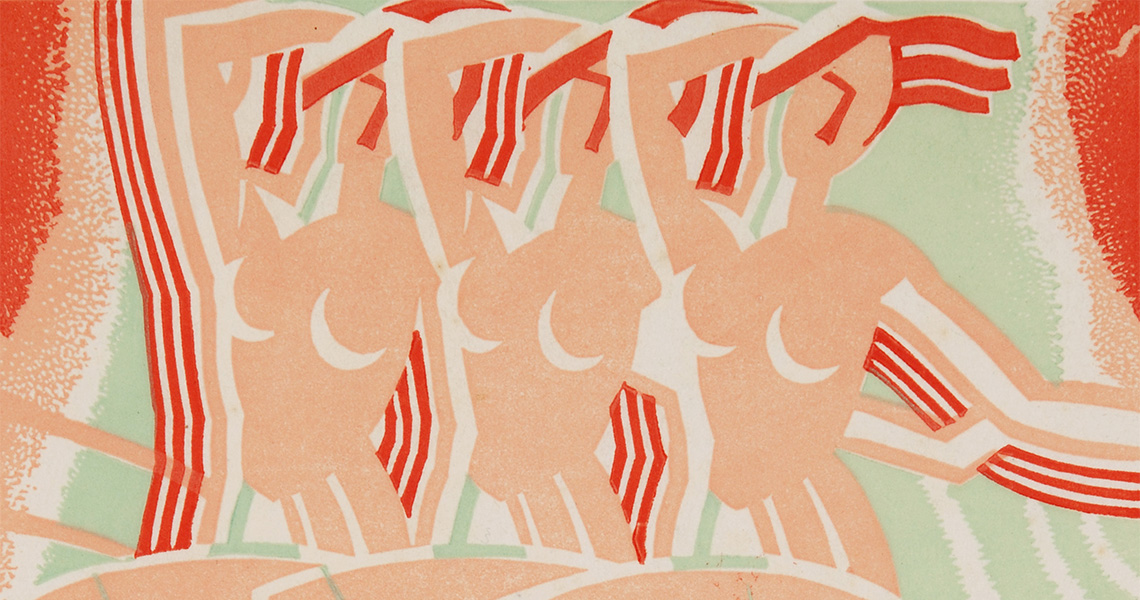2019: Cutting Edge: Modernist British Printmaking
Ten Artists. One revolution.
In summer 2019, we presented the first major exhibition on the pioneering printmakers who captured the spirit of 1930s Britain from the Grosvenor School of Modern Art. Bringing together 120 prints, drawing and posters, Cutting Edge featured iconic works from Claude Flight and eight of his leading students including Sybil Andrews, Cyril Power, Lill Tschudi, William Greengrass and Leonard Beaumont.
“An exquisite balance of boldness and graphic harmony”
Evening Standard ★★★★
“The theatre of mass transit made spectacular with humble lino.”
The Observer ★★★★
“A reminder that art can be part of the world as well as reflecting it.”
The Times
“These images...speak of a very particular time, of the possibilities of the future, and of a present untethered to past.”
Culture Whisper ★★★★
The School played a key role in the story of Modern art and quickly became a leading force in the production of printmaking – in particular, linocuts. The Grosvenor artists were renowned for their iconic, vibrant prints that championed the energy of contemporary life in the interwar years. Influenced by the radical expressions of Futurism, Vorticism and Cubism, the Grosvenor School gave its own unique interpretation of the contemporary world, incorporating art deco elements, a punchy geometric style and a vivid palette.
Cutting Edge champions the medium of the block-print linocut, which influential teacher and artist Claude Flight described as “an art of the people” due to its affordability and accessibility. Highlighting the radically changing times of the interwar period, the exhibition will explore themes of transport, speed and movement, industry, labour and sport and leisure, as well as showcasing the original tools, lino blocks and studies that revolutionised the printmaking process.
As part of the exhibition, Japanese paper cut artist, Nahoko Kojima created a unique sculpture for the Gallery’s entrance hall. This installation responded to the power of narrative and movement that is represented through the work of The Grosvenor School artist’s linocuts.

Image credit: Cyril Power, The Tube Station, 1932, © The Estate of Cyril Power. All Rights Reserved, 2019 / Bridgeman Images.
Ethel Spowers, Wet Afternoon, 1929-30, Photo Osborne Samuel, London/ ©The Estate of Ethel Spowers
Cyril Power, The Merry-Go-Round, c.1930, © The Estate of Cyril Power. All Rights Reserved, [2019] / Bridgeman Images/ photo The Wolfsonian–Florida International University
Leonard Beaumont, Nymphs, Errant, 1934, Photo Museums Sheffield/ ©The Estate of
Leonard Beaumont





